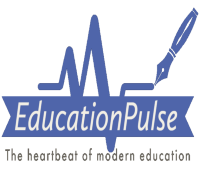In today’s world, change is inevitable. A lot of times, companies find themselves under pressure to keep up with today’s advancements and innovations. Although there are multiple reasons to push companies to change their way of doing things, people usually resist change with different concerns. Literature review will provide examples of what those concerns are and what type of strategies are needed to deal with them.
Kotter (2012) underlines the importance of vision during a change process. A carefully written vision should have six characteristics. These are: imaginable, desirable, feasible, focused, flexible and communicable. Many times, companies lack one or more of those components and they can never have a vision that could be absorbed and easily understood by their employees. As a result, their change efforts fail from the beginning because their vision was never fully understood by the stakeholders.
In Good to Great, Jim Collins (2001) talks about two characteristics which makes leaders great: Will and Humanity. Will correlates with the vision. The leader needs to be determined to follow through the vision. Humility is the focus on the people (workers and the customers) not the leaders. These two characteristics will define the direction to move forward and put the others in the center versus leaders being at the top.
In a study conducted by Gene Hall (1979) there are six stages of concern which needs to be addressed by the leaders of the organization: Information concerns, personal concerns, implementation concerns, impact concerns, collaboration concerns, refinement concerns. It’s important to listen to employees and identify which stages they are in.
Blanchard’s (2019) five strategies outline how to lead a change process. Those five strategies include expanding influence and involvement, explaining when the change is needed, collaborating on an implementation, making the change sustainable and exploring possibilities. Those strategies include ideas such as implementing the pilot, measuring the progress, keeping people accountable and respecting the power of culture.
Since March 2020, all the schools across the nation had to go through unprecedented times. A lot of schools are now in the process of getting back and making plans accordingly. While making those plans, there are some lessons learned which will have an impact on how and when the schools will reopen.
One big challenge for many schools was the technology. A lot of schools had difficulty adjusting to remote learning simply because they did not have the technology infrastructure in order to be able to continue their education remotely. HCSS could be considered to be one of the lucky ones because all the students had their personal device to continue their education online.
However, there were also additional challenges such as not being able to connect with families in the event that the students are not doing what they’re supposed to be doing during online sessions. New ways to reach out to parents (using Google Voice, texting parents, arranging virtual parent teacher conferences) should now be considered as alternative ways of parent communication.
From the leadership standpoint, it became evident that the teachers were the backbone of this new educational model and their input became more valuable for day to day operations. Since the teachers are dealing with parents and students in a different environment, their opinions and ideas shaped the change process. Since there was a natural push to all stakeholders to move towards remote learning, it became only natural to respond to it in a more efficient way.
References
Kotter, J. (2012). Leading Change. Harvard Business Review Press.
Collins, J. C. (2001). Good to great: Why some companies make the leap … and others don’t. New York, NY: Harper Business.
Hall, G. E. (1979). Concerns-based approach to facilitating change. Educational Horizons, 57, 202–208.
Blanchard, K. H., & Ken Blanchard Companies. (2019). Leading at a higher level: Blanchard on leadership and creating high performing organizations. Upper Saddle River, N.J: Pearson/Prentice Hall.

